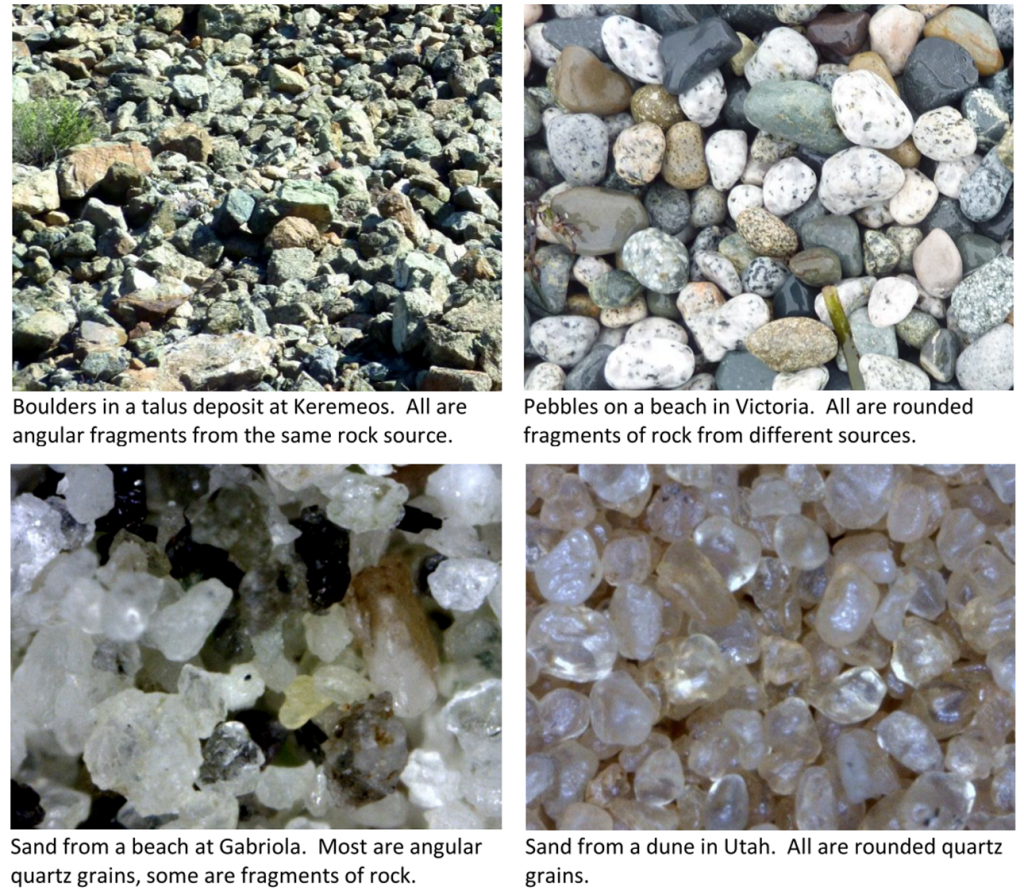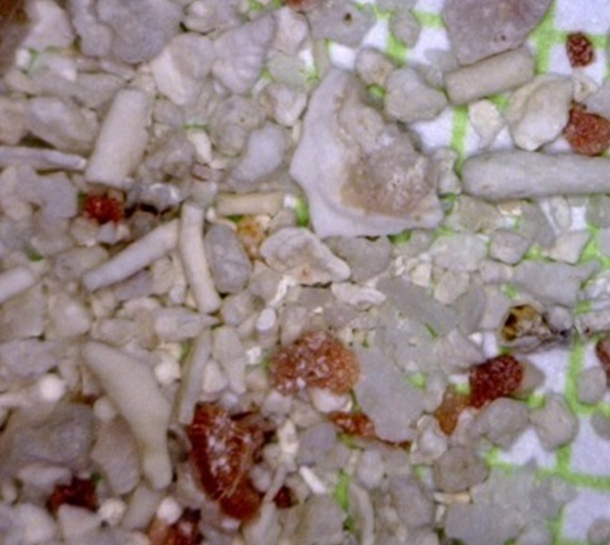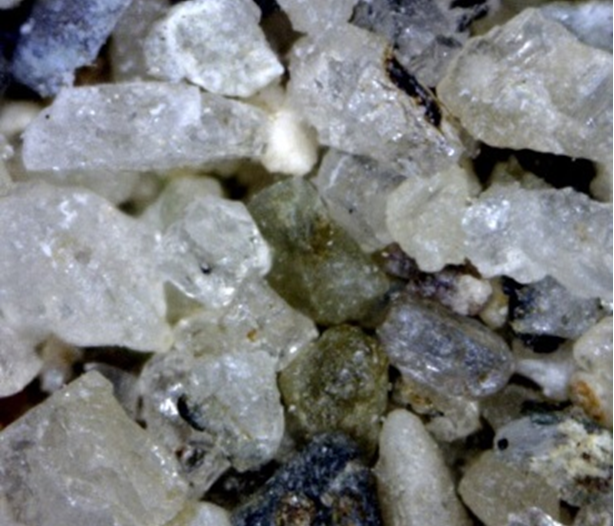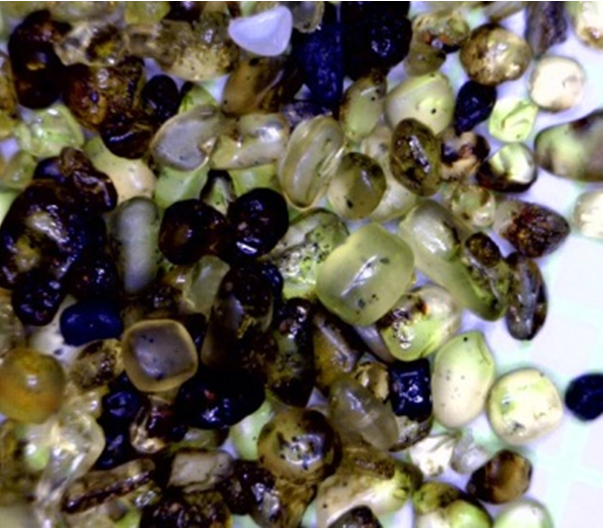44 5.3 The Products of Weathering and Erosion — Physical Geology – 2nd Edition

We’ll talk more about the nature and interpretation of sediments and sedimentary rocks in Chapter 6, but it’s worth considering here why the sand-sized sediments shown in Figure 5.3.1 are so strongly dominated by the mineral quartz, even though quartz makes up less than 20% of Earth’s crust. The explanation is that quartz is highly resistant to the types of weathering that occur at Earth’s surface. It is not affected by weak acids or the presence of oxygen. This makes it unique among the minerals that are common in igneous rocks. Quartz is also very hard, and doesn’t have cleavage, so it is resistant to mechanical erosion.
So when a rock like granite is subject to chemical weathering the feldspar and the ferromagnesian silicates get converted to clays and dissolved ions such as: Ca2+, Na+, K+, Fe2+, Mg2+, and H4SiO4, but the quartz is resistant to those processes and remains intact. The clay gradually gets eroded away, then the rock breaks apart leaving lots of grains of quartz. In other words, quartz, clay minerals, and dissolved ions are the most common products of weathering. Quartz and some of the clay minerals tend to form sedimentary deposits on and at the edges of continents, while the rest of the clay minerals and the dissolved ions tend to be washed out into the oceans to form sediments on the sea floor.
In the left side of the following table, a number of different sands are pictured and described. Describe some of the important weathering processes that might have led to the development of these sands.
See Appendix 3 for Exercise 5.3 answers.
| Image | Description and Location |
|---|---|
 |
Fragments of coral, algae, and urchin from a shallow water area (roughly 2 metres deep) near a reef in Belize. The grain diameters are between 0.1 and 1 millimetres. |
 |
Angular quartz and rock fragments from a glacial stream deposit near Osoyoos, B.C. The grain diameters are between 0.25 and 0.5 milimetres. |
 |
Rounded grains of olivine (green) and volcanic glass (black) from a beach on the big island of Hawaii. The grains are approximately 1 millimetre across. |
Image Descriptions
Figure 5.3.1 image description: Examples of weathering and erosion.
- Boulders in a talus deposit at Keremeos. All are angular fragments from the same rock source.
- Pebbles on a beach in Victoria. All are rounded fragments of rock from different sources.
- Sand from a beach at Gabriola Island. most are angular quartz grains, some are sand-sized fragments of rock.
- Sand from a dune in Utah. All are rounded quartz grains.
Media Attributions
- Figure 5.3.1: © Steven Earle. CC BY.
<!– pb_fixme –>
<!– pb_fixme –>

